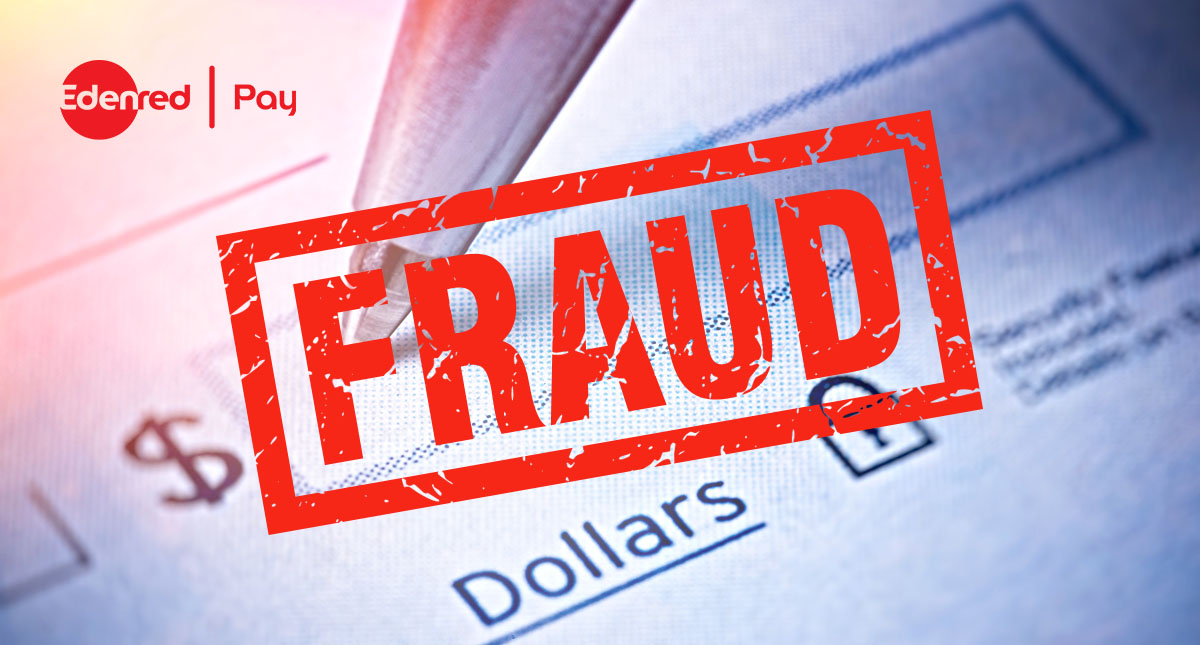Has your organization suffered financial losses because of check fraud? If so, you’re not alone. The Federal Bureau of Investigation reports that organizations lose $18.7 billion to check fraud annually.
What’s more, check fraud accounts for approximately 22 percent of all deposit account fraud losses, according to the American Bankers Association’s Deposit Account Fraud Survey for 2020.
Although small and mid-sized businesses are the most frequent targets of check fraud attacks, no business is immune to check-related fraud and the possibility of significant financial losses.
Businesses cannot afford the financial losses and potential reputational damage of check fraud. That’s why more businesses are paying their suppliers with virtual cards instead of paper checks.
Secure digital payments such as virtual cards safeguard against the risk of payment fraud, while delivering hard savings. Seventy-four percent of finance pros surveyed by the Association of Financial Professionals reported check fraud activity, while only 3 percent of businesses reported virtual cardA single-use or vendor-specific digital payment card used in B2B payments to improve control, visibility, and rebate potential. W fraud activity. This article shows you how virtual cards mitigate your risk of fraud.
How checks increase payment fraud risk
Paying suppliers with paper checks increases an organization’s risk of payment fraud in several ways:
- Lack of control. There’s no control over checks once they are dropped in the mail. Bad actors can intercept a check, use chemicals to erase ink from the check and change the payee and the amount (commonly referred to as “washing”), and divert funds to their own account. In some cities, bad actors intercept checks by stealing the contents of mailboxes on the street.
- Weak monitoring. Checks offer limited tracking compared to electronic payment methods. This means it can be hard for buyers to promptly detect suspicious or fraudulent transactions.
- Delayed detection. Unless a buyer uses a positive payA fraud prevention system where businesses send check issuance details to their bank, which then verifies checks presented for payment. service from their payment solutions provider or bank, and regularly reconciles their bank statements, it can be months before they realize that a check has been intercepted. In many cases, it’s only after a supplier calls or emails to inquire about the status of a late payment that a buyer detects the fraud.
- No verification. Checks do not offer a built-in way to verify a payee’s identity in real-time. Bad actors can create fake businesses or impersonate suppliers to intercept payments.
- Limited security features. While paper checks may include watermarks, holograms, special ink, microprinting, and other security features, they cannot match the data encryption, authentication methods, and other sophisticated safeguards built into electronic payments.
It’s no wonder that paying suppliers with checks increases an organization’s risk of payment fraud.
What are virtual cards?
The reduced risk of payment fraud is one reason that more organizations are embracing virtual cards.
Virtual cards are a plastic-less card method typically generated through a payment solutions provider or a bank. Unlike p-cards, virtual cards don’t require an organization to distribute and keep track of physical cards, and purchases made with a virtual cardA single-use or vendor-specific digital payment card used in B2B payments to improve control, visibility, and rebate potential. W typically go through an AP approval process. Virtual cards can be for recurring payments or set for single- or limited-use. Users can set the frequency and duration of recurring payments. Each virtual cardA single-use or vendor-specific digital payment card used in B2B payments to improve control, visibility, and rebate potential. W is given a unique card number, amount or amount range, and expiration date or date range. Ideal for managing expenses, cards can be linked to projects or departments and data can be integrated into an ERP or accounting system.
The process of generating a virtual cardA single-use or vendor-specific digital payment card used in B2B payments to improve control, visibility, and rebate potential. W starts with a user logging into an application or portal provided by a payment solutions provider or bank to request a virtual cardA single-use or vendor-specific digital payment card used in B2B payments to improve control, visibility, and rebate potential. W for a specific transaction or purpose. Once a virtual cardA single-use or vendor-specific digital payment card used in B2B payments to improve control, visibility, and rebate potential. W is generated, the supplier receives a set of card details, including a unique card number. These details are used to make a payment, just like a physical card.
Buyers earn cash-back rebates on qualifying virtual cardA single-use or vendor-specific digital payment card used in B2B payments to improve control, visibility, and rebate potential. W transactions.
While virtual cards are a convenient and cost-effective way to pay suppliers, more organizations are embracing virtual cards for their ability to reduce the risk of fraud and unauthorized charges.
How virtual cards reduce the risk of payment fraud
Virtual cards are the most secure way for an organization to pay its suppliers.
Here are some of the ways that virtual cards mitigate an organization’s risk of payment fraud:
- Limited data. Virtual cardA single-use or vendor-specific digital payment card used in B2B payments to improve control, visibility, and rebate potential. W payments don’t require buyers to share details of a physical card with suppliers and risk the possibility that it will be stolen by hackers. Suppliers are provided with a unique number tied to a specific virtual cardA single-use or vendor-specific digital payment card used in B2B payments to improve control, visibility, and rebate potential. W (that may be only good for one use).
- Built-in controls. Unlike physical cards, there is no chance of a plastic-less virtual cardA single-use or vendor-specific digital payment card used in B2B payments to improve control, visibility, and rebate potential. W falling into the wrong hands. Users determine the specific supplier, amount or amount range, and expiration date of each virtual cardA single-use or vendor-specific digital payment card used in B2B payments to improve control, visibility, and rebate potential. W. Once a virtual cardA single-use or vendor-specific digital payment card used in B2B payments to improve control, visibility, and rebate potential. W settles or hits its amount limit or expiration date, it is no longer valid, eliminating the possibility of unauthorized charges.
- Safeguards. Unlike paper checks, virtual cards are protected by sophisticated security features such as two-factor authentication, data encryption, and real-time transaction alerts. And fraudsters cannot “wash” or otherwise tamper with a virtual cardA single-use or vendor-specific digital payment card used in B2B payments to improve control, visibility, and rebate potential. W transaction.
- Tracking. Virtual cardA single-use or vendor-specific digital payment card used in B2B payments to improve control, visibility, and rebate potential. W transactions can be tied to specific purchase or supplier and go through an organization’s AP approval process. Buyers can see the status of virtual cardA single-use or vendor-specific digital payment card used in B2B payments to improve control, visibility, and rebate potential. W transactions in real-time. Complete logging of all transactions helps organizations detect any unauthorized or suspicious activity. And automated real-time reconciliationThe process of matching financial records—such as payments and invoices—to ensure accuracy in accounting and reporting. of settled card transactions with any ERP or accounting softwareA system for recording and managing a company’s financial transactions, often integrated with ERP and AP solutions. package enables buyers to spot issues fast.
All this makes virtual cardA single-use or vendor-specific digital payment card used in B2B payments to improve control, visibility, and rebate potential. W payments to suppliers more secure than paper checks.
Mitigate your risk of fraud
Payment fraud activity is unlikely to abate any time soon. Scammers are relentless in their efforts. Paying suppliers with virtual cards helps organizations mitigate their risk of payment fraud by limiting the exposure of sensitive financial information, eliminating the risk of payments being intercepted in the mail, providing advanced technology safeguards, and tracking transactions in real-time. Virtual cards can bolster security and provide peace of mind for buyers and suppliers alike.

Ready to elevate your B2B payments?
Whether you are automating for the first time, ready to refresh your existing technology, or looking for ways to complete the ‘last mile’ of automation, Edenred Pay can help. Let’s chat about your needs.







